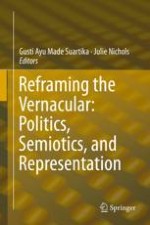2020 | OriginalPaper | Buchkapitel
6. The Shift of Symbolic Meaning of Joglo Houses for People in Brayut Tourism Village
verfasst von : Purwanto Hadi, Vincentia Reni Vitasurya, Eduardus Kevin Pandu
Erschienen in: Reframing the Vernacular: Politics, Semiotics, and Representation
Aktivieren Sie unsere intelligente Suche, um passende Fachinhalte oder Patente zu finden.
Wählen Sie Textabschnitte aus um mit Künstlicher Intelligenz passenden Patente zu finden. powered by
Markieren Sie Textabschnitte, um KI-gestützt weitere passende Inhalte zu finden. powered by
